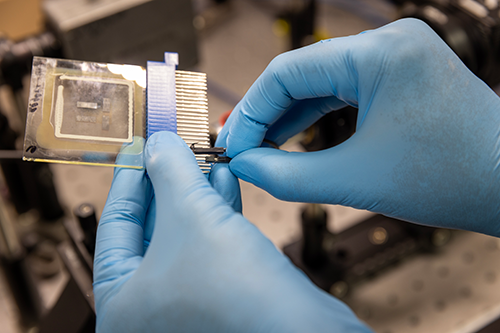OLED Night-Vision Film Now Thinner Than Paper
University of Michigan researchers found a way to turn darkness into night vision with a new OLED thinner-than-paper approach using off-the-shelf parts and existing OLED manufacturing processes. This may be the biggest breakthrough in night vision technology yet.
Using a five-stack layer of OLED film less than 1/10th of a human hair thick, the research team converted infrared light into visible light and amplified it over 100x. A photon-absorbing layer combined with a five-layer stack of OLEDs converts the infrared light into electrons. The electrons are then converted to visible light photons.

Some of the photons get sent to the user’s eye while others are reabsorbed into the photon-absorbing layer, creating a positive feedback cycle that further amplifies the amount of output light. In addition, a “memory effect” called hysteresis, produced in the OLEDs, could be used in computer vision systems. Machine learning and neural networks can potentially sense and interpret images and light signals through their OLED night-vision system.
According to the research paper, the device operates at a much lower voltage than a traditional image intensifier. And, as it is mere microns in thickness, one could assume the device could be lightweight. Raju Lampande, University of Michigan postdoctoral researcher and lead author of the study, said, “This marks the first demonstration of high photon gain in a thin film device.”
How does this compare to existing solutions? Typically, night vision goggles are heavy and require a lot of power. Modern NVGs collect ambient and infrared light, which is passed through a photocathode and turned into electrons. Those electrons pass through a microchannel plate, which multiplies them significantly before being directed to a phosphor screen. The phosphor screen is sensitive to the electrons and turns them back into visible light.
The team believes that when the new thin film OLED technology hits the market, use could be as simple as applying a peel-n-stick sticker on a favorite pair of glasses.

